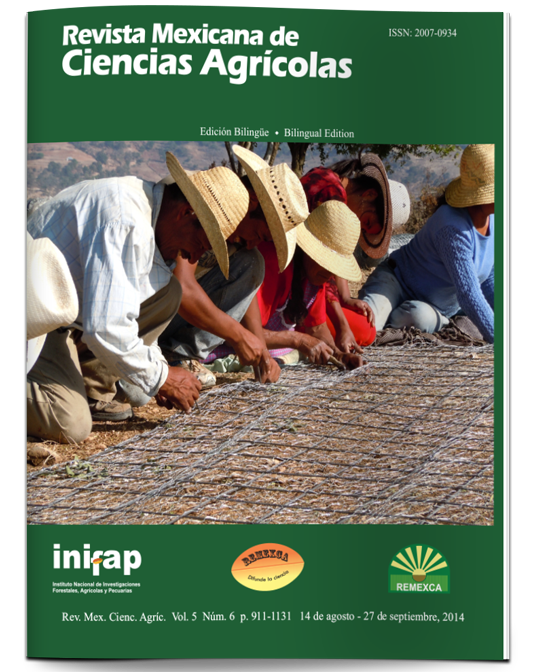Total phenols and antioxidant capacity estimated with DPPH/ABTS assays in roses on preservative solutions
DOI:
https://doi.org/10.29312/remexca.v5i6.887Keywords:
Rosa hybrida L., oxidative stress, vase life ‘Freedom’Abstract
Rose stems ‘Freedom’were evaluated in two preservative solutions: 8-hydroxyquinoline citrate (HQC) and Chrysal CLEAR® Professional 2 T-bag (CHRYSAL) in a pulse of 24 h at room temperature (24 ± 2 °C, 75% HR) and water as control. A completely randomized design with four replications was used; the experimental unit was a flower stem. Vase life, total phenolic content with the colorimetric method Folin-Ciocalteauy, total antioxidant capacity (caT) with DPPH and ABTS assays in both leaf and petal was evaluated. ANOVA and simple correlations between caT and content of phenols and between both assays was made. The results show that preservative solutions promote an increase in caT and total phenolic content in leaf, but not in petal. The leaves of the f lowering stems treated with CHRYSAL had the highest contents of total phenols and caT, while control the lowest. The average vase life was 13, 11 and 9 days for those treated with CHRYSAL, HQC and control, respectively. The total phenolic content showed a strong positive relation (α ≥0.01) with caT: 0.87 and 0.85 measured with ABTS and 0.92 and 0.85 with DPPH in leaf and petal respectively and also both methods were correlated positively and significantly with each other (r= 0.91) in leaf and (r= 0.93) in petal.
Downloads
Downloads
Published
How to Cite
Issue
Section
License
The authors who publish in Revista Mexicana de Ciencias Agrícolas accept the following conditions:
In accordance with copyright laws, Revista Mexicana de Ciencias Agrícolas recognizes and respects the authors’ moral right and ownership of property rights which will be transferred to the journal for dissemination in open access. Invariably, all the authors have to sign a letter of transfer of property rights and of originality of the article to Instituto Nacional de Investigaciones Forestales, Agrícolas y Pecuarias (INIFAP) [National Institute of Forestry, Agricultural and Livestock Research]. The author(s) must pay a fee for the reception of articles before proceeding to editorial review.
All the texts published by Revista Mexicana de Ciencias Agrícolas —with no exception— are distributed under a Creative Commons License Attribution-NonCommercial 4.0 International (CC BY-NC 4.0), which allows third parties to use the publication as long as the work’s authorship and its first publication in this journal are mentioned.
The author(s) can enter into independent and additional contractual agreements for the nonexclusive distribution of the version of the article published in Revista Mexicana de Ciencias Agrícolas (for example include it into an institutional repository or publish it in a book) as long as it is clearly and explicitly indicated that the work was published for the first time in Revista Mexicana de Ciencias Agrícolas.
For all the above, the authors shall send the Letter-transfer of Property Rights for the first publication duly filled in and signed by the author(s). This form must be sent as a PDF file to: revista_atm@yahoo.com.mx; cienciasagricola@inifap.gob.mx; remexca2017@gmail.
This work is licensed under a Creative Commons Attribution-Noncommercial 4.0 International license.



